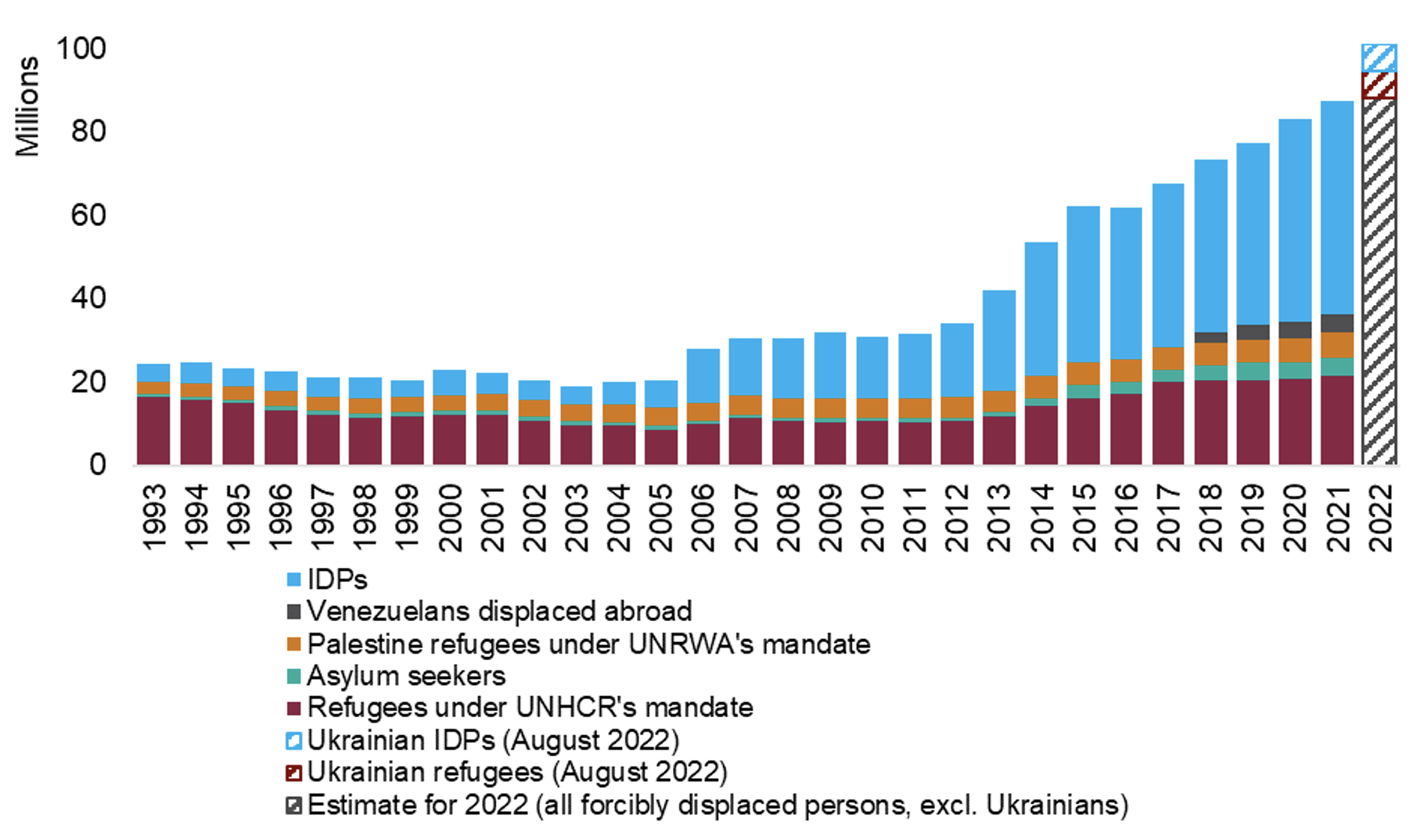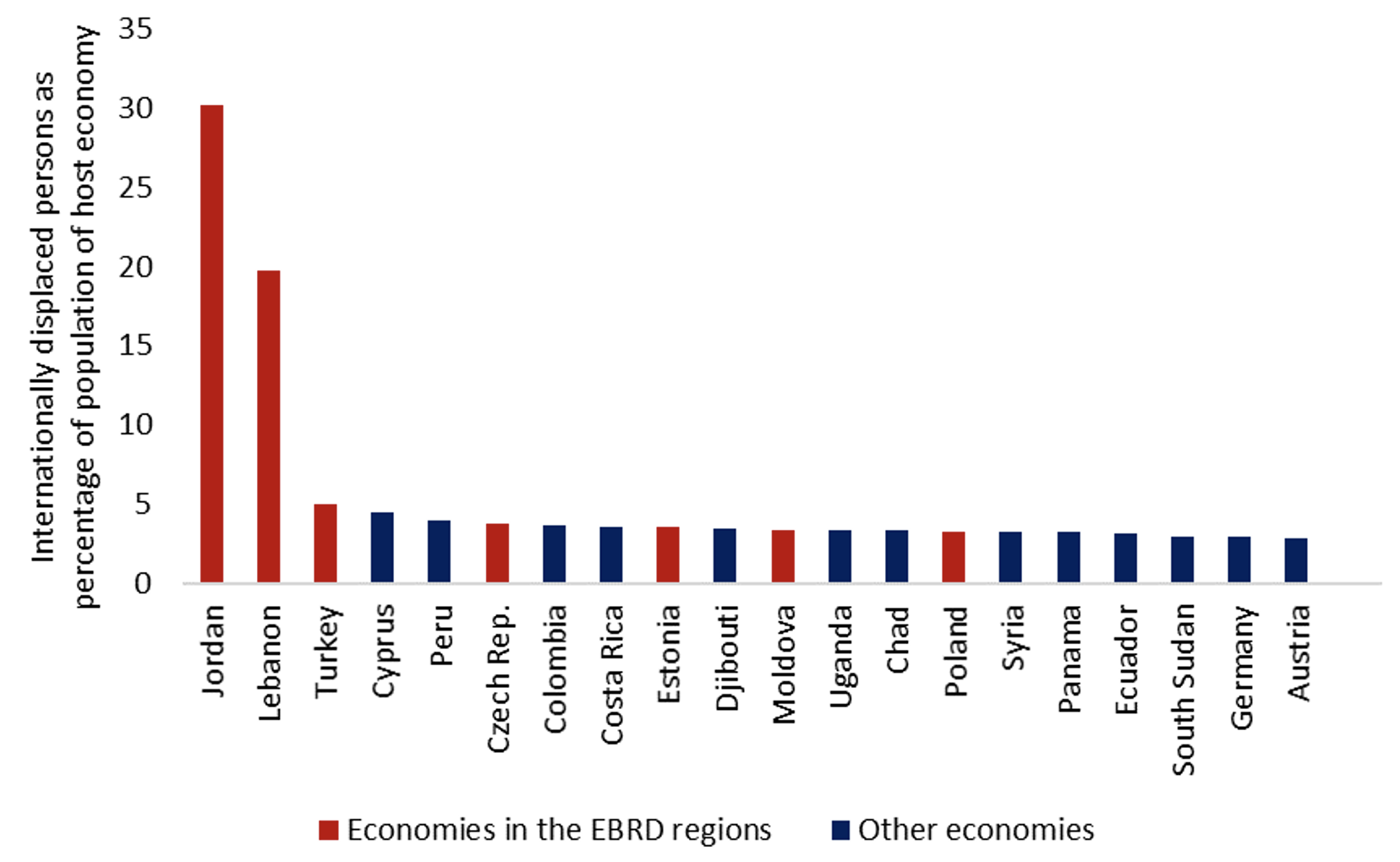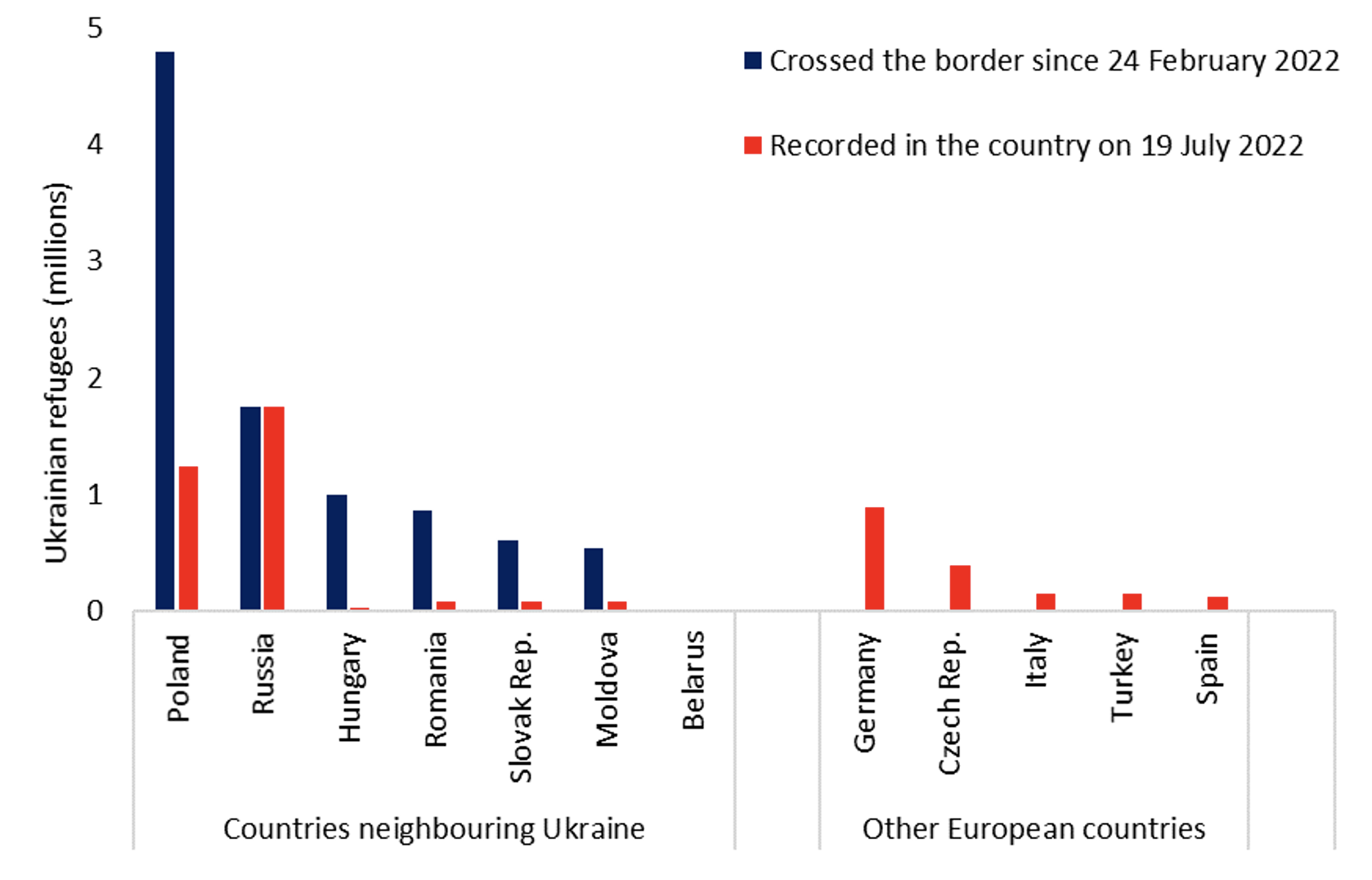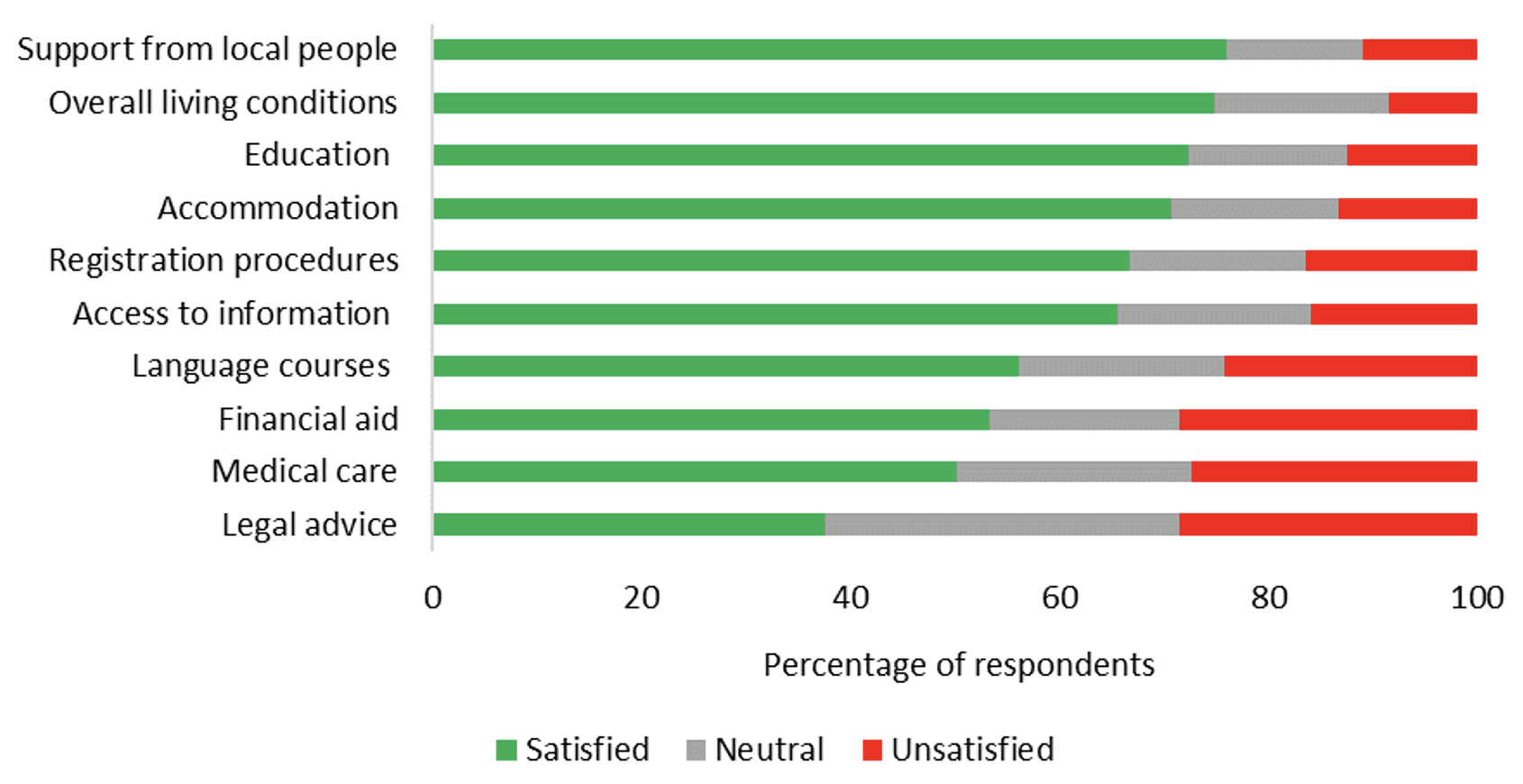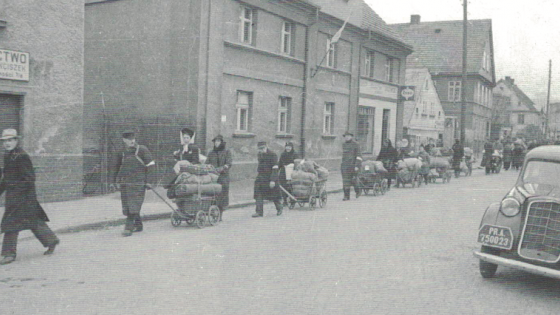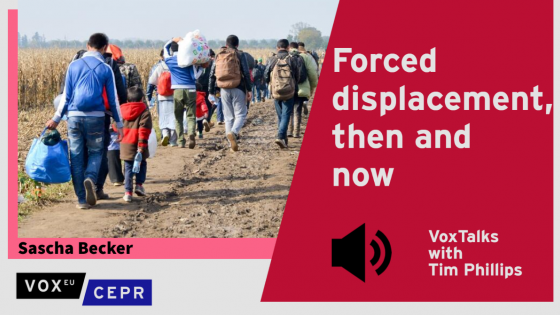As shown in Chapter 2 of this year’s EBRD Transition Report, Business Unusual, the total number of involuntary migrants worldwide – people who have been forcibly displaced from their homes as a result of persecution, conflict, violence in general, human rights violations, or natural disasters – has grown rapidly in recent years. Forced migration has even outpaced population growth: at the end of 2021, 1.1% of the world’s population had been forcibly displaced, compared with 0.4% in 1990.
Figure 1 shows that at the end of 2021, a record 87.5 million people had been forcibly displaced worldwide, with that figure estimated to rise to 101 million by the end of this year. These figures are aggregates of UNHCR estimates for all people in refugee-like situations and internally displaced person (IDP) situations (including asylum seekers, Venezuelans displaced abroad, refugees recognised under the mandate of the United Nations Relief and Works Agency for Palestine Refugees in the Near East (UNRWA), and people displaced by the war in Ukraine) (UNOCHA 2022, UNHCR 2022b, 2022c).
Figure 1 The number of forcibly displaced people has grown rapidly in recent years
Source: UNHCR, UNRWA, United Nations Office for the Coordination of Humanitarian Affairs (UNOCHA), and authors’ calculations.
Note: Figures for IDPs, non-Palestine refugees under the UNHCR’s mandate, Venezuelans displaced abroad and asylum seekers are based on UNHCR data; figures for Palestine refugees are taken from UNRWA data (via the UNHCR). The estimate for 2022 is based on data as of 9 June 2022 and excludes Ukraine. Displaced Ukrainians are estimated at 12.9 million, consisting of 6.3 million refugees and 6.6 million IDPs (as of 3 August 2022). There are no data on IDPs before 1993 or Venezuelans displaced abroad before 2018.
Relative to the size of the local population, the three countries that host the most internationally displaced persons are Jordan, Lebanon, and Turkey (see Figure 2). More generally, low-income countries host 15% of the world’s internationally displaced persons, with middle-income countries hosting another 60%, while high-income countries host the remaining 25%.
Figure 2 Low- and middle-income countries host 75% of all internationally displaced persons
Source: UNHCR, World Bank, and authors’ calculations.
Note: This chart shows selected economies with large numbers of internationally displaced people relative to the size of the local population. Figures comprise asylum seekers, Venezuelans displaced abroad, Palestine refugees under the UNRWA’s mandate, and refugees under the UNHCR’s mandate as at the end of 2021, plus Ukrainian refugees across Europe as of 19 July 2022.
Ukrainian refugees in Europe
As of August 2022, the invasion of Ukraine has caused about 6.3 million people to flee the country.
With the exception of its borders with Russia and Belarus, all of Ukraine’s borders have remained open.
Most refugees used one of the 31 border checkpoints in western Ukraine to enter Hungary, Moldova, Poland, Romania, or the Slovak Republic (Blinov and Djankov 2022). Importantly, Figure 3 shows that while these neighbouring countries initially bore the brunt of the flow of refugees, many refugees have since moved on to other countries (Angrist et al. 2022).
Figure 3 Several European economies are hosting large numbers of Ukrainian refugees
Source: UNHCR and authors’ calculations.
Note: Figures are as of 19 July 2022. Data on border crossings are only available for countries bordering Ukraine and represent gross inflows; border crossings back into Ukraine (outflows) are not shown. Approximately 17,000 Ukrainian refugees have entered Belarus since 24 February 2022, and 10,000 were in Belarus on 19 July 2022. For countries that do not share a border with Ukraine, data are only shown if the number of refugees exceeds 100,000.
Of the 9.6 million people who have crossed the border into neighbouring countries since 24 February 2022, 3.3 million have stayed in these countries (with 1.2 million currently living in Poland). In addition, 2.7 million Ukrainians are currently living in other European countries – mainly Germany, the Czech Republic, Italy, Turkey, and Spain. A substantial number has moved back to Ukraine.
Ukrainian refugees in Europe: Insights from an online survey
Unlike the refugee wave in 2015-16, the EU has granted Ukrainians the right to reside and work in its 27 member countries for up to three years. Ukrainian refugees are also eligible to access social welfare payments, social housing, healthcare, and schools. To understand the socio-economic characteristics and needs of Ukrainian refugees, the EBRD partnered with a public policy research and advisory business to roll-out an online survey between 14 June and 8 July 2022 covering more than 2,600 Ukrainian individuals across 27 European countries. The survey included questions about individuals’ background, reasons for leaving Ukraine, their current labour market status, the intended destination countries, and hardships faced in the current country of residence. Respondents were reached via ‘social media sampling’ (that is, via adverts on social media platforms).
The data show that the overwhelming majority of respondents are female (82%) and married (53%). This differs from demographic characteristics of previous refugee groups in European countries, which were mostly young, single, and male. Thirty-five percent of survey participants were located in Poland, followed by Germany, Spain, Czech Republic, France, and Italy. When asked about reasons for choosing their current location, survey respondents mostly cite prior networks (that is, having family or friends in the destination country). Just before the war, over a million Ukrainian citizens were already living in the EU, mostly in Italy (236,000), the Czech Republic (163,000), Poland (145,000), Germany (135,000), and Spain (105,000).
The available evidence on Ukrainian refugees shows not only that a higher share of them are tertiary educated than among other refugee groups, but that they are also more highly educated than the general Ukrainian population. For example, in the working-age population of Ukraine, in 2020, 56% of the women and 43% of the men were tertiary educated. A survey of Ukrainians refugees carried out in Germany by the Federal Ministry of the Interior and Community finds that among all adults surveyed, 73% had tertiary education (OECD 2022).
Satisfaction with host country conditions and public services
In terms of host country conditions and public services, refugees mostly consider help and support from locals, living conditions, access to education, and housing conditions to be very good. Only one-third of refugees reported to be unsatisfied with the ease of access to legal advice, medical care, and financial aid (see Figure 4).
Figure 4 Refugees are mostly satisfied with host country conditions and public services
Source: Kantar Public 'Voice of Ukraine' survey and authors’ calculations.
Note: Survey covers 2,674 Ukrainian refugees across Europe. Data was collected between 14 June and 8 July 2022.
Policy implications
As the war in Ukraine rages on, many refugees will remain in other European countries in the near future. As the initial support by civil society actors and private citizens starts to wane (Financial Times 2022), governments need to follow through with policies supportive of medium-term integration. Analysis by the National Integration Evaluation Mechanism (NIEM) shows that many European countries had less than advantageous policies for refugee integration in place as of early 2021. This particularly applies to countries that now host large numbers of Ukrainian refugees and to the policy areas of housing, employment, and language learning. These deficient integration policies likely apply to Ukrainian refugees, too, as policymakers struggle to find skilled translators, establish targeted second-language curricula, or provide suitable housing (Wolffhardt 2022).
Hence, a key challenge for host governments in the upcoming months will be to make good on their promise of not only temporary protection but also medium-term integration. For instance, the school-to-work transition of young refugees, which is hindered by a lack of knowledge about the host-country labour market, can be supported through targeted employment services and promoting participation and completion of vocational education programmes (OECD 2022). In addition, leveraging the private sector will be key. Programmes to support refugee-related businesses could include training programmes to solve material challenges, improve efficiency, and assist new product development as well as mentoring support to help business owners to improve the performance of their businesses. Relatedly, host countries’ authorities can work with commercial banks and microfinance institutions to facilitate access to finance in support of refugee-related businesses (World Bank 2022).
The snapshot of Ukrainian refugees provided by the 2022-23 Transition Report shows that most refugees have so far been quite satisfied with the conditions in their new host countries. However, as their stay is lengthening, integrative policies will become ever more important.
This column only scratches the surface of the evidence and analysis in the Transition Report 2022-23. The full report is publicly available here.
References
Angrist, N, S Djankov, P Goldberg and H A Patrinos (2022), “The loss of human capital in Ukraine”, VoxEU.org, 27 April.
Blinov, O and S Djankov (2022), “Ukraine’s deepening population challenge”, VoxEU.org, 28 June.
Babická, K (2022), “Temporary Protection: Poland and Hungary Once Again Creating Their Own Rules in Breach of EU Law”, OpinioJuris.org, 11 April.
Financial Times (2022), “Poland’s army of volunteers flags as Ukraine ‘refugee fatigue’ sets in”, 14 August.
OECD (2022), “The Potential Contribution of Ukrainian Refugees to the Labour Force in European Host Countries”, OECD Policy Responses on the Impacts of the War in Ukraine, OECD Publishing.
UNHCR (2022a), “Global trends. Forced displacement in 2021”.
UNHCR (2022b), “Operational Data Portal - Ukraine Refugee Situation”, Accessed on 13 July 2022.
UNHCR (2022c), “Refugee Population Statistics Database”.
UNOCHA (2022), “Ukraine Situation Report”, accessed on 19 July 2022.
Wolffhardt, A (2022), “Caught by surprise? How underdeveloped refugee integration policies will impede the integration of those displaced by the war in Ukraine”, Migration Policy Group and Institute of Public Affairs, Warsaw.
Wolffhardt, A, C Conte and T Huddleston (2022), The European benchmark for refugee integration. Evaluation 2: Comprehensive report, Migration Policy Group and Institute of Public Affairs, Warsaw.
World Bank (2022), “Deploying the Private Sector in Europe Will Be Key to the Successful Economic Integration of Refugees from Ukraine”.

